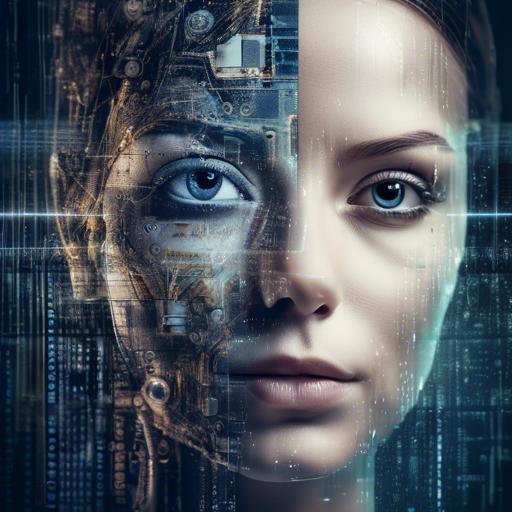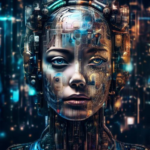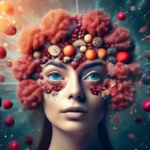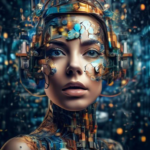Imagine holding a weathered photo in your hands—the edges curled, colors faded, and precious details lost to time. It’s a snapshot from a different era, a piece of history yearning to come alive again. Now, picture a magic wand that could erase those blemishes and breathe new life into that treasured image. Welcome to the world of AI-powered image restoration. In this adventure, we’ll dive into how cutting-edge artificial intelligence is opening new doors for preserving memories, transforming age-old photos into vivid masterpieces once more. Whether you’re a seasoned photographer, a nostalgic soul looking to revive family photos, or an artist intrigued by the intersection of technology and creativity, this guide will support your journey every step of the way. Together, let’s unleash the potential of AI to turn back the clock and restore the past to its original glory.
Table of Contents
- Understanding the Basics: What is AI-Powered Image Restoration
- Choosing the Right AI Tools for Your Image Restoration Needs
- Preparing Your Images: Best Practices for Initial Assessment
- Enhancing Image Quality: Techniques and Tips Using AI Software
- Advanced AI Features: Leveraging Machine Learning for Superior Restorations
- Overcoming Common Challenges in AI-Based Image Restoration
- Maintaining Ethical Standards in Digital Image Enhancement
- Final Thoughts
Understanding the Basics: What is AI-Powered Image Restoration
AI-powered image restoration is a fascinating, cutting-edge technology that leverages artificial intelligence to repair and enhance images. These AI algorithms are trained on vast datasets and can intelligently fill in missing details, correct distortions, and return photos to their original glory. The technology is a game-changer, especially for professionals and hobbyists looking to preserve legacy photos or renovate damaged images with precision and efficiency.
**Key Features of AI-Powered Image Restoration:**
- Detail Enhancement: AI can sharpen blurry images, bringing out intricate details that were previously hidden.
- Color Correction: Faded images can be revitalized with accurate color adjustments.
- Noise Reduction: Unwanted noise and grain can be minimized for a cleaner look.
- Scratch and Damage Repair: AI can intelligently remove scratches, spots, and other forms of damage.
AI-assisted software provides unparalleled advantages compared to traditional methods. The automation and precision these tools offer significantly cut down the time and effort involved in manual restoration processes. Additionally, they are continually improving, thanks to ongoing advancements in machine learning.
| AI Tool | Feature Highlight |
|---|---|
| DeepArt’s Restore | Advanced noise reduction |
| ColorizeIt | Accurate color correction |
| SnapFix | Comprehensive detail enhancement |
For anyone beginning their journey in image restoration, it’s essential to understand both the limitations and potential of AI tools. While they can perform wonders, contextual judgment and manual tweaks may still be necessary for achieving the best results. Experiment with various AI solutions to find the perfect match for your project requirements.
AI-powered image restoration is an invaluable resource for anyone looking to breathe new life into old or damaged photos. It simplifies the restoration process while offering professional-level outcomes. Whether you are a seasoned photographer or an amateur, these tools make it easier than ever to embark on image restoration projects.
Choosing the Right AI Tools for Your Image Restoration Needs
Selecting the most effective AI tools for image restoration can make a world of difference in your projects. With an array of options available, making an informed decision requires careful consideration of various factors.
Features and Functionality
- User Interface: Choose tools that offer an intuitive and user-friendly interface. This is especially crucial if you’re not deeply technical.
- Output Quality: High-quality, realistic restorations should always be a top priority. Look at sample outputs and reviews to gauge the tool’s performance.
- Customization Options: The ability to fine-tune settings can empower you to achieve results tailored to your specific needs.
- Batch Processing: For larger projects, tools that support batch processing will significantly speed up your workflow.
Cost and Accessibility
The cost of AI tools can vary widely, from free open-source solutions to premium subscriptions. Analyze your budget and frequency of use to find a tool that provides the best value for your investment.
| Tool | Cost | Platform |
|---|---|---|
| Remini | Free/Subscription | Mobile |
| Let’s Enhance | Free/Paid Tiers | Web |
| DeOldify | Free | Open-source |
Community and Support
The AI community can be an invaluable resource. Opt for tools that not only have strong developer support but also active user forums and abundant tutorials. This can drastically shorten the learning curve and assist with troubleshooting issues that arise.
Compatibility and Integration
ensure the AI tools you select are compatible with your existing software ecosystem. Seamless integration with your current workflow will save time and prevent frustrations. Look for tools that offer plugins or can be easily used alongside popular software like Adobe Photoshop or Lightroom.
By carefully evaluating these factors, you’ll be well-equipped to choose AI tools that best align with your image restoration goals, making every project smoother and more successful.
Preparing Your Images: Best Practices for Initial Assessment
Before diving into the thrilling world of AI-driven image restoration, it’s essential to prepare your images meticulously. Proper initial assessment lays the groundwork for successful restoration, ensuring the AI algorithms perform at their best.
**Resolution and Quality Check**: Start by examining the resolution of your images. Higher resolution images will generally yield better restoration results. Look for:
- Pixel dimensions
- File size
- Image clarity
Evaluate the quality by zooming in to identify issues such as blurriness, noise, or pixelation.
**Image Artifacts Identification**: Spot any existing imperfections. Common artifacts include:
- Compression artifacts (especially in JPEGs)
- Scratches or blemishes
- Missing details due to overexposure or underexposure
| Artifact Type | Description | Example |
|---|---|---|
| Compression | Loss of data due to file format | Blurring around edges |
| Scratches | Physical damage in print or digital form | Lines across image |
| Exposure Issues | Imbalances in lighting | Overexposed or underexposed areas |
**Metadata Review**: Examine the image metadata if available. Useful metadata includes:
- Date and time of capture
- Camera settings (ISO, aperture, shutter speed)
- Editing history
This information can be crucial for advanced AI restoration techniques that factor in the original shooting conditions.
**Color and Contrast Calibration**: Analyze the color balance and contrast in the images. Disparate color tones or unbalanced contrast might require pre-restoration adjustments. Use histogram analysis to determine the tonal range and intensity distribution.
Take these steps seriously to set the stage for smooth and effective restoration. Your attention to detail now will pay off in the pristine images you’ll achieve later.
Enhancing Image Quality: Techniques and Tips Using AI Software
Artificial intelligence has revolutionized the way we approach image restoration. With advanced algorithms and deep learning techniques, AI can enhance image quality, bringing new life to old or damaged photographs. Here are some standout techniques and tips for achieving optimal results using AI software.
- Automated Defect Detection: AI software can automatically identify and correct common issues such as scratches, dust, and blemishes on photos. By using machine learning models trained on vast datasets, these tools can pinpoint imperfections with remarkable accuracy.
- Colorization and Tone Adjustment: Converting black and white images to color, or adjusting tones for better clarity, is made incredibly simple with AI. These tools analyze the historical context and patterns in an image to reconstruct what the original colors might have looked like.
- Upscaling and Super Resolution: AI can upscale images to higher resolutions without compromising quality, thanks to technologies like deep learning-based super-resolution. This allows for stunning, high-definition restorations of smaller, pixelated images.
When diving into image restoration with AI, it’s essential to choose the right tools. Here’s a quick look at some popular software options and their features:
| Software | Key Features |
|---|---|
| Adobe Photoshop | AI-powered Neural Filters, auto-tone adjustments, sky replacement |
| DeepArt.io | Automated style transfer, texture enhancements |
| Topaz Labs | Gigapixel AI for upscaling, DeNoise AI for noise reduction |
Beyond software capabilities, detailed attention during the restoration process ensures maximum quality. For instance, when dealing with colorization, customizing hues manually can achieve more authentic results over default settings. Adjusting highlights and shadows consistently can also significantly impact the final image’s aesthetic.
Feeling overwhelmed by technology? Don’t worry! Many AI software options provide step-by-step tutorials and community support forums. Engaging with these resources is a great way to enhance your understanding and apply practical techniques more effectively. Remember, the fusion of AI and human creativity can yield impressive transformations that breathe new life into cherished memories.
Advanced AI Features: Leveraging Machine Learning for Superior Restorations
Incorporating AI into your image restoration projects can significantly elevate the quality of your results. With **advanced machine learning algorithms**, AI can automatically detect and fix imperfections that would otherwise be time-consuming to address manually. One exciting feature in this realm is AI’s ability to **train on thousands of images**, learning to identify patterns that signify damage, noise, or blur.
Key Benefits:
- Enhanced Accuracy: AI models are continually trained to improve their performance, reducing the likelihood of errors.
- Time Efficiency: AI can process images in a fraction of the time it would take a human, freeing you up for other creative tasks.
- Consistency: AI ensures a uniform quality across all images, maintaining a consistent look for your projects.
**Latest AI Features to Explore:**
| Feature | Description |
|---|---|
| Noise Reduction | Automatically identifies and removes noise without losing image details. |
| Super Resolution | Enhances the resolution of your images, making them sharper and more detailed. |
| Colorization | Brings black and white images to life by adding accurate, vibrant colors. |
| Auto-Cropping | Intelligently crops images to highlight key subjects while maintaining composition. |
By leveraging these advanced features, your ability to restore images to their former glory or even surpass their original condition becomes far more achievable. **Noise reduction** tools, for instance, excel at identifying and erasing unwanted artifacts, ensuring that the core elements of the image remain intact and crystal clear.
And don’t overlook **super resolution** capabilities. This innovative feature can take low-resolution images and enhance their quality, allowing you to work with a broader range of source material without compromise. Coupled with the AI-driven colorization tool, which infuses life into monochrome photos, you have an extraordinary toolkit at your disposal for producing astonishingly vivid and sharp restorations.
Experimenting with **auto-cropping** also allows you to highlight important subjects without the cumbersome manual adjustments, giving you more time to focus on perfecting the finer details of your project. By taking full advantage of these advanced AI features, you’re not just restoring images; you’re enhancing them in ways that were previously unimaginable.
Overcoming Common Challenges in AI-Based Image Restoration
Delving into AI-based image restoration isn’t without its hurdles. The complexity of these projects often stems from various challenges that can hinder progress. Nevertheless, understanding these stumbling blocks and how to tackle them can significantly ease your journey.
First and foremost, **inadequate training data** can be a significant obstacle. High-quality datasets are crucial for machine learning models to perform effectively. Unfortunately, such datasets aren’t always readily available. To combat this, consider the following strategies:
- Leverage publicly available datasets, ensuring they match your project’s specific requirements.
- Utilize data augmentation techniques to expand and diversify your training set without needing additional data.
- Invest in creating proprietary datasets, which, despite the upfront effort, yield tailored results.
Another common issue is **overfitting**, where the model performs excellently on training data but poorly on new, unseen images. Addressing overfitting involves:
- Implementing regularization techniques such as L1/L2 regularization to penalize complex models.
- Employing dropout layers to prevent the network from relying too heavily on specific neurons.
- Using cross-validation methods to ensure the model’s performance is consistent across different data subsets.
**scalability** remains a concern, especially when processing large image datasets. Efficiently scaling AI models without compromising accuracy requires:
- Optimizing algorithms for performance, potentially involving parallel processing techniques.
- Utilizing cloud-based platforms that offer dynamic scaling based on demand.
- Balancing between model complexity and computational efficiency.
Implementing these solutions can significantly mitigate the challenges faced in AI-based image restoration projects. By prioritizing quality data, combating overfitting, and ensuring scalability, your journey toward flawless image restoration will be far smoother.
Maintaining Ethical Standards in Digital Image Enhancement
Using advanced AI technologies for digital image restoration comes with great responsibility. As we strive to improve image quality and bring historical photos back to life, it’s crucial to adhere to ethical standards to ensure integrity and authenticity.
- Transparency: Always disclose when an image has been enhanced using AI tools. This maintains trust and allows viewers to differentiate between original and modified content.
- Respect Historical Accuracy: When restoring historical photos, it’s important to respect the original context and avoid adding elements that were never part of the original image.
- Consent and Rights: Ensure you have the necessary permissions and rights to enhance and use the images, especially if they are personal or proprietary.
Adhering to these principles helps in preserving the authenticity and credibility of image restoration projects. When working with AI tools, consider the following:
| Best Practices | Considerations |
|---|---|
| Keep a record of the original and enhanced images | Ensures accountability and transparency |
| Avoid misleading enhancements | Prevents the distortion of historical facts |
| Ensure accuracy in enhancements | Maintains the image’s original integrity |
When dealing with images of individuals, ethical considerations become even more crucial. Be mindful of the following:
- Privacy: Respect the privacy of individuals depicted in the images, especially in sensitive or personal contexts.
- Authenticity: Avoid creating false representations of people that could lead to misunderstandings or harm.
- Sensitivity: Handle images with cultural and social significance with care to avoid misinterpretation or offense.
By upholding these ethical standards, we ensure that our AI-driven image restoration projects are responsible and trustworthy, benefiting both our work and the broader community.
Final Thoughts
As you embark on your journey to harness the power of AI for image restoration projects, remember that innovation and creativity go hand in hand. Each pixel you restore, each detail you enhance, is a testament to the magic of technology and the boundless possibilities it offers. So don’t be afraid to push the boundaries, to experiment, to dream big. With AI as your ally, there’s no limit to what you can achieve in the world of digital restoration. Embrace the future, and let your imagination soar. The canvas is yours to create, the masterpiece yours to unveil. Let AI be your guiding light, and watch your images come back to life in ways you never thought possible. Happy restoring!































